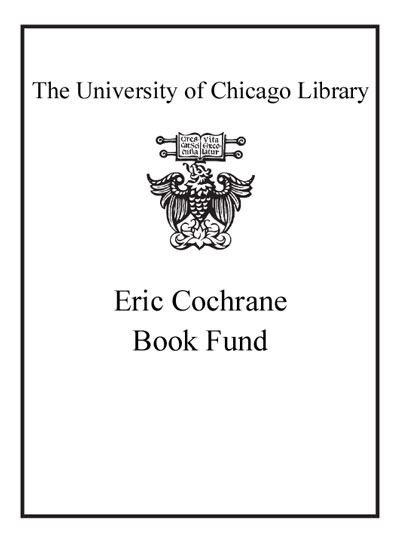Review by Choice Review
The notion of a palimpsestic Rome--with concurrent layers of culture, history, and dirt--has had exponents as renowned as Petrarch and Freud. In the academic world, ancient and medieval historians have been the main champions of this approach, but Bosworth (Reading Univ., UK) magisterially applies it here to the modern history of Rome (roughly 1790-2010). A neighborhood map, the monuments of which provide an entree into the period covered, prefaces each chapter (e.g., the Garibaldi monuments on the Janiculan initiate a discussion of Risorgimento Rome). Following Benedict Anderson and Eric Hobsbawm, Bosworth analyzes the notions of memory, community, and nation that contested and redefined Romanita and its relationship to Italianita, balancing the competing claims of antiquarians, Catholics, republicans, Fascists, industrialists, and tourists to the history and fabric of Rome. A major theme is the conflict of modernization and antiquity. The book's density and rambling style reflect the difficulty of identifying historical patterns in the semantic detritus of 3,000 years, but the book is engaging and Bosworth excels when revealing the problematic histories of seemingly straightforward monuments. General readers will find it challenging but rewarding. Summing Up: Recommended. General collections and upper-division undergraduates through professionals. C. E. Bene^Dvs New College of Florida
Copyright American Library Association, used with permission.
Review by Booklist Review
A scholar of modern Italy intimately familiar with the streetscape of Rome, Bosworth reflects on the Eternal City's past two centuries. Specifically, he discusses buildings, monuments, and commemorative plaques erected by Rome's modern rulers as emblems of contests over Rome's history by the succession of regimes since 1800. Most sites provoking Bosworth's ruminations are off the tourist's usual paths to ancient Roman ruins, starting with a museum about Napoleonic rule and concluding with a side-street memorial to Aldo Moro, the former prime minister assassinated in 1978. Bridging those sites and the political meanings behind them, the Catholic Church's pervasive presence, and particularly the temporal and spiritual rule of its popes, elicits Bosworth's extensive commentary. From critiques of nationalist statues and monuments that assert secular supremacy (a Garibaldi statue disdainfully overlooks the Vatican), Bosworth proceeds to the Fascist regime's appropriations of Roman history. Mussolini's constructions in the city, including some hiding in plain sight inscribed with his name, close out Bosworth's fruitful considerations of how modern Romans have battled over their deeply layered history.--Taylor, Gilbert Copyright 2010 Booklist
From Booklist, Copyright (c) American Library Association. Used with permission.
Review by Publisher's Weekly Review
Using the map of Rome as a guide, Bosworth (Mussolini's Italy: Life Under the Fascist Dictatorship, 1915-1945) undertakes a dense examination of the Italian capital in an attempt to uncover its "historical messages and import." Bosworth focuses on the changes to this mercurial city over the last two centuries and the myriad ways that Italy puts its own history to use. It's heritage versus history, with classical Rome, Papal Rome, and Italian Rome (the republic), followed by the Fascists, the Red Brigade, and quite a bit of history-for-profit, creating the Rome of the early 21st century. The primary interpreter of Rome's story has always been the Catholic Church, whose dominance in Rome over 2,000 years has tended to overwhelm other influences. For the 19th century, Risorgimento and all who came after (most notably Mussolini and the Fascists), adaptive history was the preferred way of influencing contemporary impressions of Rome: If an event fitted the desired image, it was included; if not, it never happened. The author's long love affair with Rome and its history makes him a well-suited guide to the city, and his observations-right down to Berlusconi's tactics of hand picking events to commemorate "sellabrations" and "infotainment"-are astute. Despite some rather academic writing, Bosworth's Rome is an absorbing antidote to the pap of the mighty Italian tourist machine. (Apr.) © Copyright PWxyz, LLC. All rights reserved.
Review by Kirkus Book Review
In the Eternal City, where monuments from three millennia jostle in the streets, history is often rewritten to bolster arguments about the present and future.So states Bosworth (History/Reading Univ., U.K.; Mussolini's Italy, 2005, etc.) in a scholarly survey focusing on the centuries since the French Revolution. The French conquerors of Italy, unsurprisingly, claimed to be reviving the republican values of classical Rome, a claim that would be taken up in the 19th century by Italian nationalists fighting against the restored French monarchy and other foreign occupiers. This link to ancient, pagan Rome earned Garibaldi, Mazzini and even King Victor Emmanuel the implacable hostility of Rome's popes, who saw any secular order in the city as a threat and proposed their own version of history, rooted in man's sinfulness and the pope's eternal authority. The unified Italian nation created in 1861 had to wait nine years before it included Romeby military force.In the years before World War I, liberal national governmentscelebrated their links to the classical Roman past with edifices like the hideous Victor Emmanuel monument, looming over the Forum since its completion in 1911. But liberal nationalism had begun to give way to imperialism even before Mussolini seized power and trumpeted his vision of a Roman past based on military might. PostWorld War II contention over the meaning of Rome's history (treated rather briefly here) included those on the far left, like the members of the Red Brigade that assassinated Christian Democratic politician Aldo Moro, who claimed themselves heirs to the anti-fascist Resistance. Through it all, the common people of Rome, whether devoutly Catholic or eternally cynical, tended to ignore "the most recent reading of history, composed by their betters," rooting their lives instead in family and neighborhood.Bosworth's main point seems blindingly obvious, and the more interesting material giving specific instances of Rome's History Wars through the centuries is developed with a density of detail that makes this a book for academics rather than general readers.]] Copyright Kirkus Reviews, used with permission.
Copyright (c) Kirkus Reviews, used with permission.
Review by Choice Review
Review by Booklist Review
Review by Publisher's Weekly Review
Review by Kirkus Book Review

